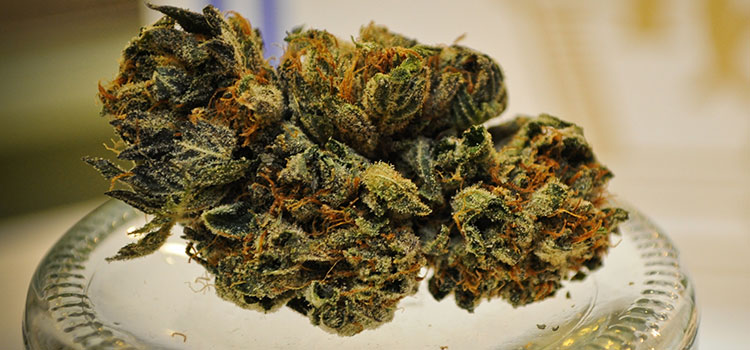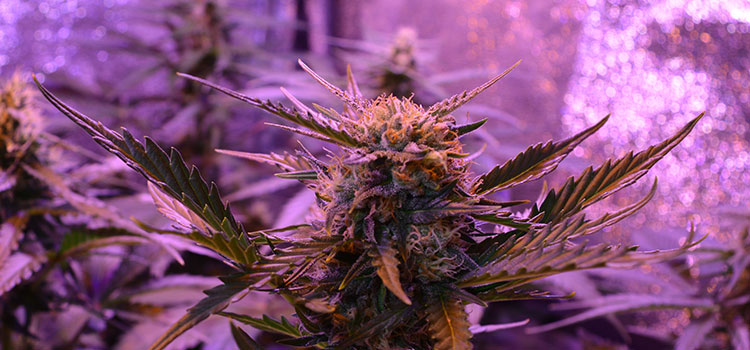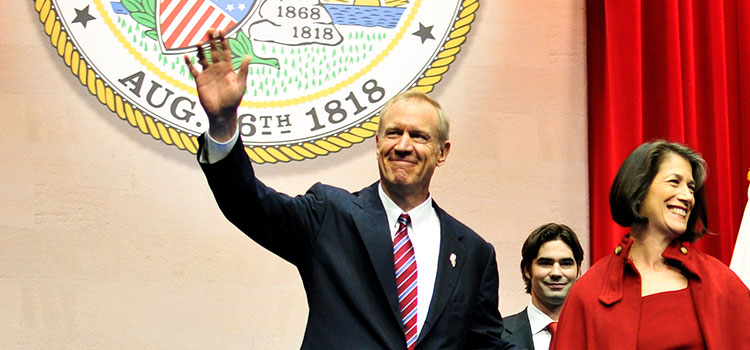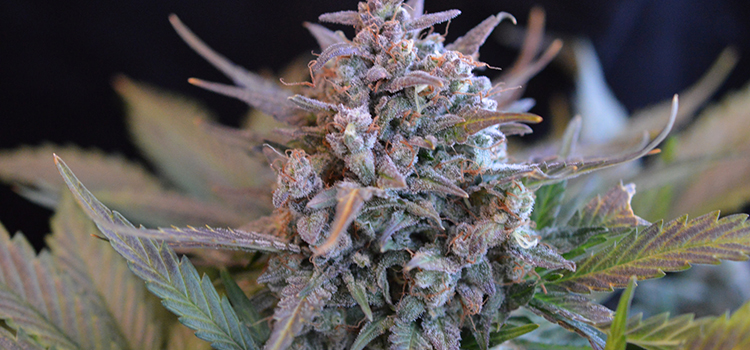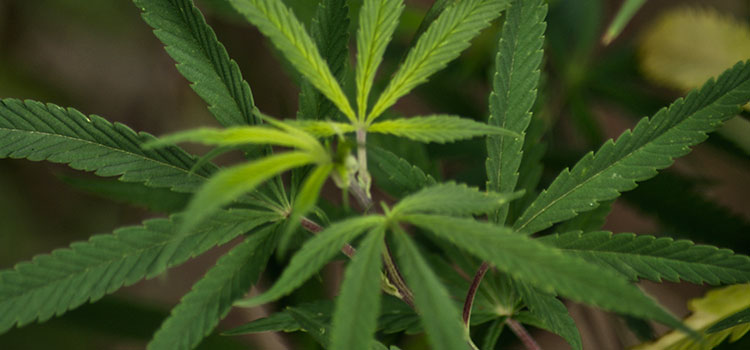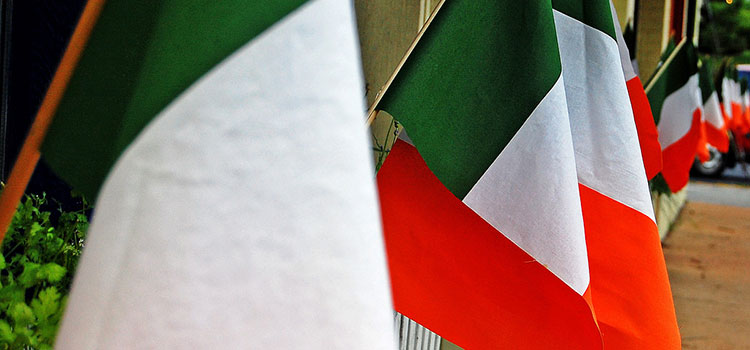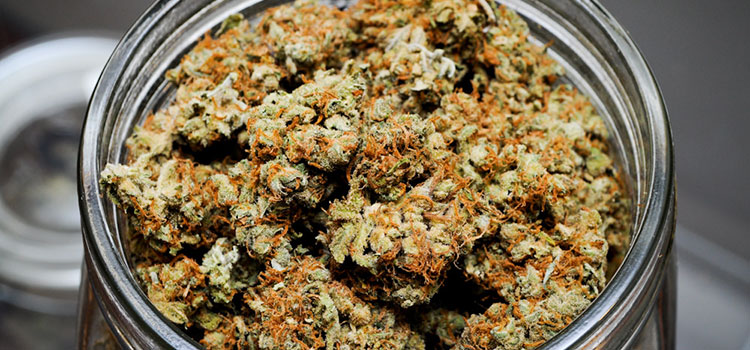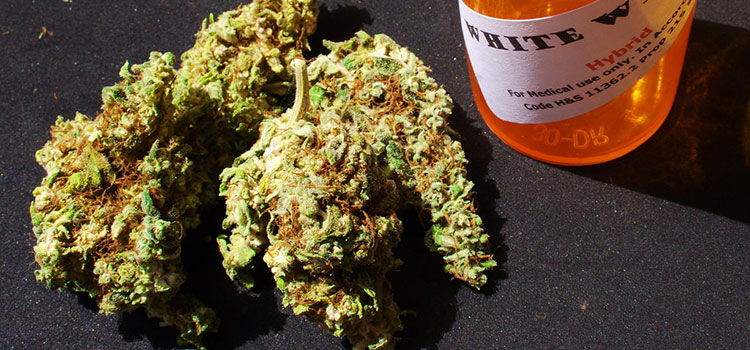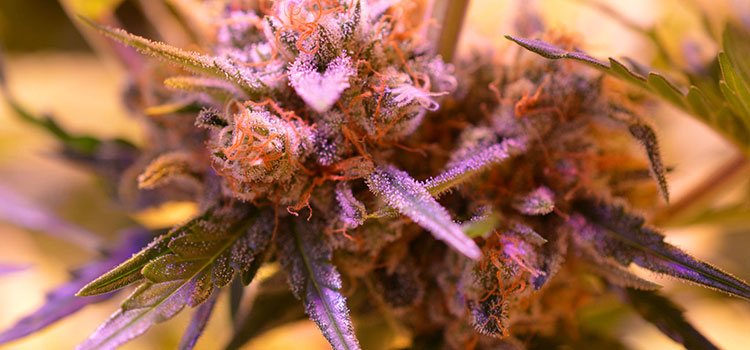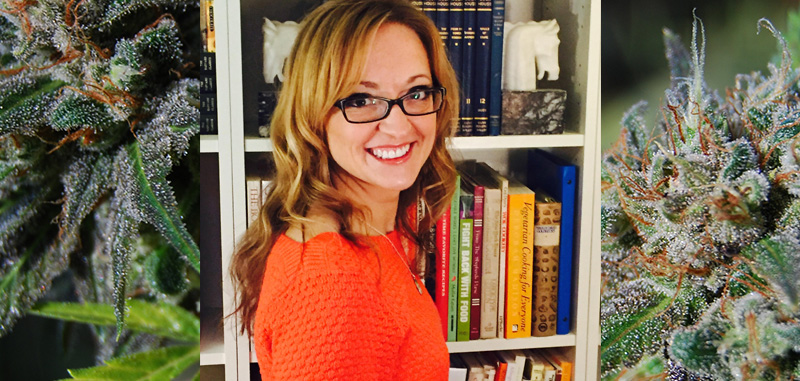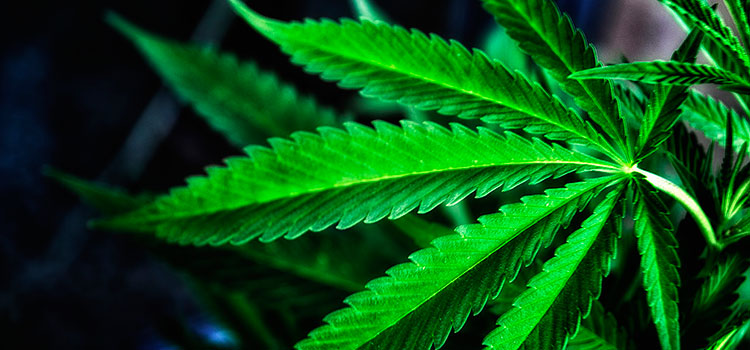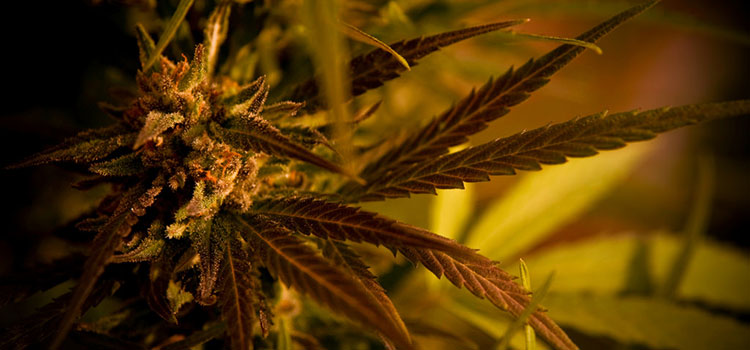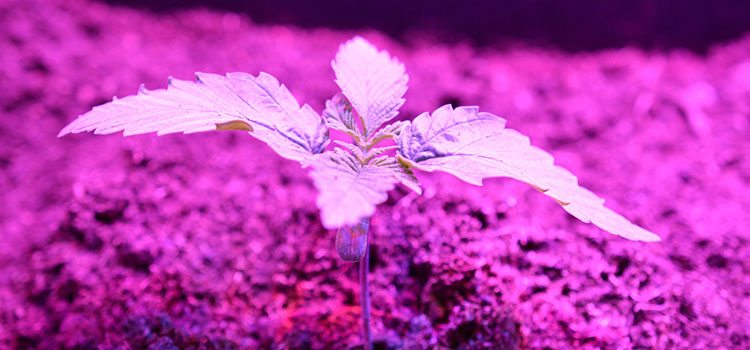Kirsten Nelson is co-founder of cannabis branding agency Blunt Branding, a Pacific Northwest marketing firm dedicated to the cannabis industry. Kirsten recently joined our podcast host Shango Los for a conversation about the unique situation that cannabis producers and retailers face now that the market has been normalized and regulated. Many entrepreneurs still believe the notion that cannabis just “sells itself,” but as the competition gets tougher, more and more companies are realizing that a strategic approach to messaging is necessary.
In this interview, Kirsten talks about ways that retailers can change course to accommodate an expanding customer base, why cannabis companies should consider how they appeal to all of the Myers-Briggs personality types, and some unique strategies to engage customers that are currently underutilized in the cannabis market.
Listen to the podcast below, or scroll down for the full transcript!
Subscribe to the Ganjapreneur podcast on iTunes, Stitcher, SoundCloud or Google Play.
Listen to the podcast:
Read the transcript:
Shango Los: Hi there, and welcome to the Ganjapreneur.com podcast. I am your host, Shango Los. The Ganjapreneur.com podcast gives us an opportunity to speak directly to entrepreneurs, cannabis growers, product developers and cannabis medicine researchers all focused on making the most of cannabis normalization. As your host, I do my best to bring you original cannabis industry ideas that will ignite your own entrepreneurial spark and give you actional information to improve your business strategy and improve your health and the health of cannabis patients everywhere.
Today, my guest is Kirsten Nelson. Kirsten Nelson is co-founder of Blunt Branding, a strategic marketing firm that focuses on revenue generation. Through Kirsten’s unique psychological approach and educational background, she focuses on the business infrastructure necessary for explosive growth. In addition to ghostwriting a Wall Street Journal best-selling book, she has proven successful by increasing her client’s revenue consistently by triple digits.
We asked Kirsten to be on this show after getting really strong feedback about the Blunt Branding commercial we ran two weeks ago. Instead of me trying to explain what psychological marketing was to everyone who asked, we decided to just invite her on this show to offer us all some free consulting. I want to be clear that our podcasts guest spots are not paid for and we invited Kirsten because her approach to marketing is so unique and people were asking about it. With that, welcome to the show, Kirsten.
Kirsten Nelson: Thanks Shango, I am excited to be here.
Shango Los: Yeah, glad you could be here. When cannabis had just started to normalize enough that folks were actually bothering to make company names and start designing packaging, there is was lot of trademark infringement and poor production quality and brands that were barely thought out. As we transitioned into seeing more capital infused into the scene and an increase of marketing professionals making the switch from other industries, what are some of the milestones that you see that the industry hitting that it is maturing at a branding level?
Kirsten Nelson: Well, this is one of the exciting things about the cannabis industry. There are a lot of exciting things but, like you described, the initial barely thought out brands, I always kind of called that the throwing the wet spaghetti on the wall and seeing what sticks. It is hasty, it is rushed, but now we are getting to the point where we are seeing development and people paying more attention and getting a little more strategic in developing their presence.
In my perspective, the trademark infringements that we are seeing that are getting called onto the carpet between Snoop Dogg and the Canadian Hockey League, this is a sign of progress. People are being taken more seriously, the industry is being taken more seriously in general. We have got big corporate player stepping out, which is really exciting. We have had Microsoft, Apple and a number of other Fortune 500 and 100 companies really starting to be a participant in normalization by adopting their company policies and even stepping into the marketplace.
Shango Los: That makes a lot of sense too because, up until now, the heavies were just kind of ignoring us and most of the industry was appreciating that because there wasn’t as much competition, but there is a certain amount of respect in the fact that the heavies are starting to come and get involved. Even though most of us just wish that we can keep the money to ourselves, it does speak to the maturity of the industry that big players are moving in and even bothering to try and defend their trademarks.
Kirsten Nelson: Exactly and, really, that is another big call to action to all of the business owners in the cannabis industry because the bigger players are stepping onto the field. It is time to get your game together. The poorly executed brands, they do show us something that is very interesting and it really is counter to what most people believe and the misconception in that is that cannabis sells itself and we are going to see that misconception challenged in a lot of different ways as these other big companies are coming in and there is the increasing threat of corporatisation in cannabis. The truth is, that the real battle is not selling cannabis to your customers, it is convincing your customers why they should buy their cannabis from you.
Shango Los: That makes a lot of sense. Even if they are not a cannabis specific retailer, that goes the same for grinders and rolling papers and everything. There is so many, the market is becoming so full with companies that all want to take advantage of the green rush that now it is not, “Do you want weed?” because the answer is always yes, it is, “Do you want our cannabis, do you want our grinder, do you want our professional services?”
Kirsten Nelson: Exactly, the market is quickly flooding. Pretty soon your customers will be able to get whatever they want around every corner. The sustainable business models, these are going to be the ones that give the higher order value, they get their repeat customers, they have more word of mouth because they are taking the time to be intentional about how they show up in the marketplace and how well they stand out in their customer’s minds and lives.
Shango Los: We are talking about a perfect world where cannabis business owners would be excited and they would be active in their branding so they can show differentiation between themselves and their competitors. When I participated in the .com boom, there was not very much resistance to brand strategies. The entrepreneurs understood it and, while they may not have always agreed with the marketing teams, they were glad to have the marketers around. That said, that is not really the case as often in cannabis.
Not only do we see trimmed budgets and companies that can’t even afford a marketing team, but also straight disdain for marketers, especially the people who come from the Prohibition era. They are used to not needing that kind of a thing. Some folks are just against marketers philosophically, right? What has been your experience? Are you seeing an increase in the acceptance of marketing professionals in cannabis, or is it still really cool and very few companies are getting professionals?
Kirsten Nelson: We are still at the early stages of the game where there is high demand for skilled marketing assistants. What we are seeing is the more aggressive and savvy business owners who recognize this need, who are watching the trends, who are seeing all of the other big players encroaching on the space, that these people are willing to make that investment and carving out their niche in the market and really driving their stake into the ground because it is going to get a lot more competitive. It is, the dynamics of the industry, the marketplace, it’s going to shift and if you are not on top if it, you are not going to stand out and you are going to get flushed away.
Shango Los: Right on. Let’s get to our first area of places that the business owners can be on top of it because we invited you here to … We can talk theory and that is fun, but the goal was to really provide people with some things that they can do that are concrete, that can help them increase their bottom line. What is the number one opportunity that you see right now that cannabis companies are missing that could help them increase their revenue?
Kirsten Nelson: Well, in cannabis, in selling cannabis specifically, one of the things that is hugely lacking in all of the dispensaries that I have been to, is increasing the average customer order value.
Shango Los: Okay, so that is a really wonky answer, will you break that out and kind of explain it?
Kirsten Nelson: Yeah, absolutely. Selling cannabis is more than about transaction. In any kind of selling, it is more than just transaction in making the sale. It is about creating an experience, it is about building relationships, it is about building trust. The way that you increase average order value with your customers is by intentionally crafting that experience and you do that by figuring out what your customers need and what they are going to use it for and how does this cannabis fit into their life.
If you consider selling car. If you are a car salesman, not the sleazy kind, but the car salesman who actually wants to give your customers the car and connect them with what best fits in their world, the vehicle that will take them where they need to go in their life, if you will. You have to know what your customer are going to use it for. If you just sold everybody who came in a Maserati, what is the family with eight kids going to do? They need a club wagon, not a Maserati.
Or a minivan if they have just three kids. What are they going to use it for? Is it going to be a work truck, is this a commuter vehicle? Are they buying it because they want to be more environmentally conscious so they would be a better fit for a Prius? That kind of analogy translates into understanding your customers because everybody has a little bit different need in coming into a dispensary. Contrary to popular corporate beliefs, we don’t just all want THC and get as high as possible. It leaves out all of the medicinal benefits.
If someone is coming in because they have anxiety, well if they have anxiety, you better not give them a Sativa because that is going to, most likely, make things worse and give them a negative experience. Especially where there are so many people who haven’t smoked since high school, or maybe haven’t even smoked at all because things are becoming legalized, they are open and interested into experimenting and seeing how cannabis can help them in their lives.
If you are not aware of those different needs, you are doing a disservice to your customers and also to the normalization of cannabis because normalization really comes into play at a grassroots level and educating the customers, educating the populace, giving them a positive experience of what cannabis is and dispelling a lot of the myths that we had in the war on drugs and DARE. Figuring out how cannabis fits into your customers’ lives, you can sell them the right “car” based on their need.
Shango Los: I get that, and that sounds like a good customer service sales cycle, but how does that actually impact the average customer order? This all comes back to increasing the bottom line and you talked to that a lot. Let’s assume that the budtender or a website, if you are selling grinders, let’s say that you are doing that, how does that directly translate to increasing the size of the order?
Kirsten Nelson: Well, if you consider … Well, let’s just take the newbies. Somebody who is new to weed, maybe you smoked once or twice in high school, if at all, but right now you are looking to get back in. You don’t know anything about it and likely the stuff that you smoked in high school was skunk weed that somebody sold you in between breaks at school, it was not high quality stuff, there was not the variety that there is now. For someone who comes into a dispensary, and you see everything that’s on the shelves and on the walls, it is overwhelming.
You don’t know where to start so you need to rely on the budtender to help you experience it. Something like creating a newbie kit. If they are new moms who are trying it out and they are afraid of getting too high, you would sell them some lemonade or something with black pepper that is going to help smooth out their experience in case they get too high. Like Dr. Ethan Russo, he always recommends the pesto noodles with black pepper.
Shango Los: I have seen that slide too!
Kirsten Nelson: Yeah, that could be a really fun thing of, “Hey, you know what? Go get a couple of your girlfriends, here is your newbie kit. You guys can go ahead and get high and if you get too high, you know what? Or if you have the munchies, you can have this delicious pesto noodles with black pepper and make it an experience.” That is how cannabis will be instilled and normalized into people’s individual lives. Like coffee breaks, that used to not be a thing, but because marketing and advertising and coffee companies showed people how this fits into their lives, it is has become an integral part of everyday experience in so many people’s lives.
Shango Los: You know, I am sitting here kind of imagining this, what this store would look like, and I haven’t seen this anywhere yet. Let’s say that we used your example because we all know that if you get too high, giving yourself some fresh lemonade, something with black pepper, even just smelling the black pepper will help even out your high. Whenever beverages are sold at cannabis stores, it is always infused with more THC, right?
Kirsten Nelson: Yeah.
Shango Los: If you get … If there are … If there is anything to eat there, it too is infused with THC so your suggestion is that after they have used your product, they are probably going to want to imbibe either for pleasure or because they got too high. Go ahead and have the non-THC items in the store as well so that starts to make the store purchase more of a lifestyle visit than just scoring some cannabis.
Kirsten Nelson: Absolutely, and that really is what good marketing is about, is addressing the lifestyle needs and creating that relationship with your customers based on their lifestyle and inserting yourself in to their world and becoming a partner who is thoughtful, who is considerate, who is helpful and makes life better. That is the definition of a good business owner.
Shango Los: Right on, thanks, Kirsten. We are going to take a short break and be right back. You are listening to the Ganjapreneur.com podcast.
As a cannabis entrepreneur, you know how challenging recruiting quality talent can be. Your day is already busy enough and yet there is an ever growing pile of resumes on your desk and your team is begging you to hire more help. Hiring the right person can make a profound impact on your company.
As a cannabis entrepreneur, you know how challenging recruiting quality talent can be. Your day is already busy enough and yet there is an ever growing pile of resumes on your desk and your team is begging you to hire more help. Hiring the right person can make a profound impact on your company. There is no reason that you have to suddenly be an expert hiring manager. Not when there is Viridian Staffing.Viridian Staffing recruits solely for adult use cannabis, medical marijuana and hemp companies and those that service them. Viridian Staffing’s recruiters each have over 10 years of experience and they will use that experience to recruit the kind of employees that will make you look good. Whether you are looking for a master grower, extractor, grow room support, or trimming, Viridian can find an appropriate person in your area. They can even recruit administrative or graphic design professionals who may not need cannabis experience.
Viridian Staffing recruits solely for adult use cannabis, medical marijuana and hemp companies and those that service them. Viridian Staffing’s recruiters each have over 10 years of experience and they will use that experience to recruit the kind of employees that will make you look good. Whether you are looking for a master grower, extractor, grow room support, or trimming, Viridian can find an appropriate person in your area. They can even recruit administrative or graphic design professionals who may not need cannabis experience.
Because you are a startup, you may also need human resources help for awhile. Viridian Staffing can make sure that your HR files are complete and keep you out of trouble with state and federal employment requirements. Because the cannabis industry is booming, cannabis recruiting companies are popping up all over the country, but good marketing does not mean good recruiting. Some of the recruiting shops that have opened are run by novices who does not yet have a thorough understanding of employment law and the complexities of hiring for cannabis.
Don’t hire an amateur to find you a professional. Consider Viridian Staffing to make that staff of resumes disappear and complete your team with exactly the hire you were hoping for. You can find out more at viridianstaffing.com, that is V-I-R-I-D-I-A-N staffing.com. Now, back to the show.
Welcome back, you are listening to the Ganjapreneur.com podcast, I am your host, Shango Los, and our guest this week is Kirsten Nelson, co-founder of Blunt Branding. Kirsten, the main reason we invited you to be on this show on this week is because of the popularity of your Myers-Briggs personality type approach to copywriting. I have heard you talk about that at cannabis events and have talked to you about it on the side and then when I repeat it to people, everybody is like, “Whoa, that is such a different approach to copywriting.”
Most copywriters, they write for people like themselves and that is a really small part of the overall buying public. For this whole second part of the show, what I would appreciate that you do is kind of give us an overview of your approach and then we will transition into how people can actually do this at home. Let’s start at the top, break down for people who don’t even know what Myers-Briggs is, why don’t you break down what that is and how it can impact good copywriting?
Kirsten Nelson: Sure. Myers-Briggs is a personality and personal tendency decision making model or tool. And it is just a tool. Some people extrapolate a lot of things from this and other personality typing tools that takes it out context and makes it kind of irrelevant. Basically, our approach is to use Myers-Briggs as a model to, one, help you identify your own blind spots. Two, it also helps you understand your own communication and decision-making styles and then, three, you are able to better understand their customers and communicate to them based on their values and decision making styles.
It really is just a tool to step outside of your own box and look at the world through other people’s eyes and kind of understand the buckets that they live in so that you can come to them and speak to them in their language. One of the analogies that I like to use to explain what it is it’s like if I were speaking Mandarin and I come up to you, Shango, and you were speaking Swahili and I am trying to sell you something that I have. You are not going to understand what I am saying and it does not matter if I speak louder, it doesn’t matter if I use more exclamation points, it doesn’t matter what font I use. If I am not speaking your language, we are not going to go anywhere and nothing is going to happen and you are going to miss out on a lot of communication because of those differences.
While buying language isn’t necessarily as different as Mandarin and Swahili, there are a lot of differences in how someone makes their buying decisions based on whether it is an emotional decision, if they go by gut feeling, or if they research every single thing that they can find, the articles, the consumer reports, before they make that buying decision. When you approach things in that manner, you are able to capture the, more than likely, 70%.
Most people just speak to their own personality preferences and buying styles. When you do that, you are eliminating a massive portion of the market. This helps to open that up for you and for your business and helps you to better reach your consumers and customers where they are at. We did publish an article … You guys published an article on Ganjapreneur.com where we go into a little bit more detail about the buying styles.
Shango Los: One of the things that that just debunked for me is that a lot of people think of psychological marketing as being manipulative. What you are describing is not a technique for being manipulative to get people to buy something they don’t want, you are talking about caring enough to be aware of different communication styles so that you can make your pitch to your customer in a way that they listen.
Kirsten Nelson: Absolutely. You don’t want to sell a Maserati to a family on a limited income who has 12 kids. It is not going to be …
Shango Los: Oh God.
Kirsten Nelson: … able to fit.
Shango Los: Twelve kids, God help them.
Kirsten Nelson: They need enough help, they don’t need a Maserati.
Shango Los: Yeah. Let’s say that I am a cannabis business owner and either I have got a cannabis retail shop and people always expect to go to my website first to see if it is the kind of place they want to go, or even if it is an unlicensed business and I am selling grinders and rolling papers online. One way or another, I am going to be sitting at my desk on some boring Tuesday afternoon and I have got to write copy for my website, but I am probably not really familiar with Myers-Briggs, and maybe I read through a Wikipedia page, right? If I am just a normal person without and educational background, how can what you’re talking about help me? How can I use this, myself as a normal person?
Kirsten Nelson: Well, if you are able to just segment it into two different types of buyers, the logical buyer and an emotional buyer and speak to the needs that they would be interested in, if you could step into their shoes, if you will. What does a logical buyer going to want? What kinds of details about your product do you have that you can share with them to answer any questions that they may have? Share your track record, why are you the best at what you do and why should they be with you instead of someone else? Offer the information that is going to prove that you have the best product at the best value. Those are types of traits that will appeal to the logical buyer.
For an emotional buyer, they are going to want the emotional connection, they want the story, they want to see the human side of your business. What are your values. Like on your website, your about pages, your mission statement, where can they connect with you? Are you on social media, what kind of interaction do you have with your customers on social media? They are going to want to know your story, how did you get into cannabis? How did you start your business? Those types of details are very relevant to the emotional buyer and they are a part of their decision making process. This really is about connecting to your customers in a way to create an intimate envrionment and build that relationship, even if you never even speak to one another, it can just be solely an online experience and yet they feel like they know you.
Shango Los: I get it, so it is like a continuum of how much you want to get into this. If you just want to dabble in trying to write your copy this way, you can write stuff for people who buy logically and people who buy with emotion and you can talk about those and you will capture a huge market share of Myers-Briggs personality types. If you are a nerd and you really want to drill down and you have got a couple free hours, you can actually go and tease out eight of the sixteen Myers-Briggs personality categories and make the personas, like you were talking about in the first segment, and write to those. It’s really based on the time that the business owner has, how into this they want to get.
Kirsten Nelson: Absolutely. What we do at Blunt Branding is we get very, very detailed and in-depth in, not only planning out the business structure, but how that relates to the customers and crafting scenario work around the whole customer experience from start to finish and then back around again. Just to anticipate those different needs that we tend to overlook because we become our own experts and then we develop all of these blind spots because we forget that the rest of the world doesn’t know all of the things that we know so we make a lot of assumptions and we leave our customers behind, which is a real tragedy.
Shango Los: Right on. I am going to ask you to tease out another personality type that somebody who is doing this, basically, can write for. We have got the logical person, we are telling them all the fine details and the size of items and the costs and the weights and the THC percentages and what it is made out of and all of these data points, and then the more emotional buyer, we are telling them a story so they kind of fall in love with our company and they feel cared for and they know that they are going to get good customer service.
What is another one? I kept on thinking about the people who are into sports teams. I don’t know if they are their own Myers-Briggs personality type, but I know that there are so many cannabis companies that, for example, football season, they are putting out pre-rolls that have got the emblems, or at least the colors of their local football teams. That has got to be a personality type.
Kirsten Nelson: Yeah, that type of connection, when you are selling to that, you are selling to something that people have an emotional connection with. People get all sorts of crazy about their sports teams. You are stepping into their lives, you are recognizing in their worlds that they have this connection and you are giving them something that is fun to share with other people who share that value of the interest in sports. It is like “O-M-G! You have the green and blue Seattle Seahawks papers!” What a novelty that is to share with your friends and to bring that kind of level of connection.
Shango Los: Right on, so I guess that just falls into that emotional category. Can you give me an example, that you haven’t already, of a different kind of a type that someone could write for?
Kirsten Nelson: Absolutely, another one of the primary ways that the Myers-Briggs separates out buying personalities and preferences is by introvert vs extrovert. Most marketing caters to extroverts and it tends to be the loud, it tends to be the face to face conversation, a lot of direct interaction and when you do this in your business, you are catering to 50% of the population. That sounds pretty great.
However, on the flip side, you are missing 50% of your introverted customers and here is the really interesting thing about catering to extroverts vs the introverts. Introverts tend to be a lot less needy. They want to do a lot of the work themselves. For you as a business owner, instead of catering to extroverts who regularly need the one on one human contact, they want time with their budtender, they want to shoot the breeze, they want to talk about all of these other things and have that face time.
If you are able to, on your website, in your lobby, in your different literature and pamphlets and brochures and strain identification cards, give non-interactive things like that, your introverted customers will educate themselves, figure out what they want, spend less time at your counters, taking up less of your budtender’s time because you were thoughtful enough to present them the information that they needed to answer their question to help them make their buying decisions.
Shango Los: It is kind of like you are going to have a budtender and you are going to have then trained for the extroverts, because that is how they want their data, but you are also going to have your shop, whether online or in person, sprinkled with self-education devices and stuff that the introverts can read, so that they can absorb the data at their own rate and then just go up to the budtender and buy their purchases.
Kirsten Nelson: Absolutely. Mary’s Medicinal does a really fantastic job of this. They have a really great educational pamphlet brochure that goes through all of the ins and outs of cannabis and what to look for and what kind of experience it gives you. That is hugely valuable for the introverted buyer who is sitting in the lobby feeling kind of like they are in a can of sardines and they just want to get their stuff and get out, but they are nervous because they don’t know what to get.
They don’t know what to ask for and it puts a lot of pressure on them and it doesn’t have to be that way. You can help them feel confident and secure and you bet they are going to come back to you if they are able to buy on their terms without as much pressure to act in a way that isn’t their preference as an extrovert.
Shango Los: That makes a lot of sense, thinking about Mary’s Medicinals. That is a good example because you are right. They appeal to the logical buyer by providing studies for support, and providing lots of detailed information about what goes into their products, but they are also appealing to the emotional buyer because they have got a really great story and they really cater to patients and then you are also hitting the extrovert because they have got cutting edge products that do cool things and deliver THC and CBD in good ways. For the introvert, they have got all of this education online and at their point of sale in retail stores so introverts can pick up that flyer and just read it and then just go buy it. That is a good point.
Kirsten Nelson: Exactly, yes.
Shango Los: Right on. Oh, looking at the time, it is time for another break. We will be right back, you are listening to the Ganjapreneur.com podcast.
The Ganjapreneur Podcast is listened to by tens of thousands of entrepreneurs and enthusiasts every single week. These folks are most likely your target customers and we would like to introduce you to each other. Our down to earth and information rich commercial breaks can deliver your message to the cannabis business community and others who just find relief in getting high.
If you want to reach out and connect with our audience in the most personal way that we can offer, go ahead and drop us an email at grow@ganjapreneur.com and we can talk about you becoming a commercial sponsor of the podcast. Thanks for listening and thanks for being part of the Ganjapreneur family, now back to the show.
Welcome back, you are listening to the Ganjapreneur.com podcast, I am your host, Shango Los. Our guest for this week is Kirsten Nelson, co-founder of Blunt Branding. During the earlier parts of the show, we were talking about the different ways to sculpt your message so that your customers can hear what you are saying, really talking to them, thinking about their perspective so that you can explain to them how the different objects, or the cannabis that you sell fits into their life so that they buy more and increase their final purchase from you. It is really important how you get them the message as well. And, Kirsten, I know you are a big proponent of mobile marketing. Why don’t you break down for us a little bit why you think that mobile marketing is important and, maybe, give us a couple best practices.
Kirsten Nelson: Sure, absolutely. One of the biggest things is if you are not mobile friendly, you are losing customers and you are losing revenue. Period, that is just it. Your website has to be mobile friendly. It is so critical that you do have a presence on social media. Facebook, Instagram, Pinterest, those different social media channels are really important and then Google+, as much of a dinosaur and as unsuccessful and a pain in the rear it has always kind of been, it is really important to have, at least, a page set up with your business hours, your website, all of the basic details for your company on Google+ because it improves your search engine results.
There are other areas, like different apps that are out there, have a presence and establish your business and all of the business details on Leafly, WeedMaps, Yelp is also another really important one because it puts you in front of your customers when they are looking for whatever it is you are selling. Again, you can spend so much time and money and resources on different social media strategies. It is important to have a strategy but, at minimum if you are just getting started, make sure that you have your location, a map to your store or your shop, make sure you have our phone number, the hours. If you are a dispensary, have a menu. If you are a different kind of retailer, have a list of the different products that you offer so people can kind of explore before they come in and also make sure you have your website listed on there.
Shango Los: Right, that makes a lot of sense. You know a lot of people have been getting their Facebook pages shut down if they sell cannabis, so that is probably a danger as well.
Kirsten Nelson: It is and that is one of the most important things in any kind of business, but more importantly in cannabis. You need to make sure that you have a highly agile strategy in your social media and plan on when your page will shut down, not if, but when. Eventually it is going to happen one way or another. There are a few things that you can do. You can have a backup page. If you have Facebook, have a backup one set up and ready to go.
Have all of your about information, your contact information, a few post scheduled. Have it ready to go in case you do get shut down. The second thing that you want to make sure that you do is be ready to contact the admin on whatever social media platform and contest that your page has been shut down. Contact them, let them know. Time is of the essence in that, it really is important that you have that contact information and plan that into how you are interacting online and in social media.
Have a diverse number of accounts so don’t just depend on Facebook, don’t just depend on Instagram. Find a couple that are there so that your fans can continually interact with you if one gets shut down. Another thing is email lists and that’s another thing that’s kind of been overlooked, so newsletters, gather emails in a different way so that you can contact them and you have more control over it than you would on social media.
Shango Los: Yeah, the redundancy part that you mentioned makes a lot of sense because if your Facebook page gets shut down, your fans are going to turn to your Instagram or your Twitter or your Leafly to find out what happened and on those other pages, you can give the address of your backup Facebook page and then, boom, you are back off and getting back in contact with your customers. It’s really too bad that Facebook is deleted pages, that we even have to have that expectation that you are going to get shut down, just in case it does.
Kirsten Nelson: Yeah, exactly. It is what it is and it something that we get to deal with. Instead of get angry about it, just be proactive and plan for it.
Shango Los: Other than simply expecting our customers to go to websites and social media to find out what is going on with us, I know that you are a big fan of increasing overall revenue by doing mobile text messaging promotions to a customer base. Can you just give us two ideas for what these promotions could look like and why you are a big advocate for them?
Kirsten Nelson: Sure. I am a huge advocate for it because it is a huge untapped market. It is strange how ignored this is, I think business owners get a little overwhelmed and intimidated by it, but it really is incredible. Americans, they generally check their phones 46 times a day. That is a lot! More than 90% of text messages, they are read within 3 minutes. Crazy. Crazy amount of access, you are getting into someone’s pocket, in their phone, in their purse, you are right there.
A couple of ideas for promotions. One of the things you can do to increase sales, which is something that everybody is always interested in is bringing people in on a day of the week where, perhaps, you have less traffic or fewer sales. Create some kind of special or promotion around that day of the week. Send them a text, the ones that are on your list, and you are going to see a boost in your sales.
Second really big one to use SMS or text marketing, is to build those relationships. One really fun thing to do in whatever business you have is to create some kind of insiders list and let them know when you have new products coming in, new strains if you are a dispensary. Let them be the first to know and it really helps them to feel like you have got their back and you are looking out for them and they can always count on you to give them the newest, latest, greatest.
Shango Los: Right on, I can totally see how being on a special mobile-only text messaging list that lets you know first when you got something new in the shop that could really emphasize your relationship with them because, suddenly, you are giving them secret information that all of your other customers aren’t getting.
Kirsten Nelson: Yep, it is pretty powerful.
Shango Los: Right on. Kirsten, that is all the time we have for today, thanks so much for being on the show.
Kirsten Nelson: My pleasure, thank you.
Shango Los: Kirsten Nelson is co-founder of Blunt Branding. You can find out more at bluntbranding.com. You can also read her recent article on the Ganjapreneur.com website by following the link provide on this episode’s podcast page. You can find more episodes of the Ganjapreneur podcast in the podcast section at ganjapreneur.com and in the Apple iTunes store.
On the Ganjapreneur.com website, you will find the latest cannabis news, product reviews and cannabis jobs updated daily, along with transcriptions of this podcast. You can also download the Ganjapreneur.com app in iTunes and Google Play. For info on me and where I will be speaking, go to shangolos.com.
Do you have a company that wants to reach our national audience of cannabis enthusiasts? Email grow@ganjapreneur.com to find out how.
Today’s show was produced by Michael Rowe. I am your host, Shango Los.


